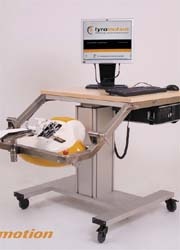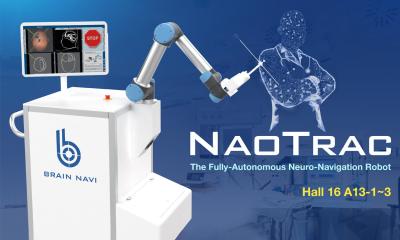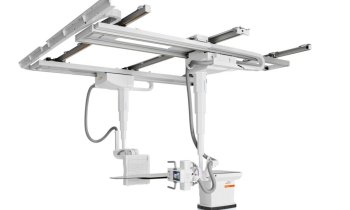World premiere at MEDICA
A robot-assisted therapy for hand and finger rehabilitation after strokes
Over 15 million people are affected by strokes annually, and about five million of these (source: WHO 2004) are left with lasting damage.

Around half of the patients are of working age. Motor disorders – particularly hemiparesis – are the most common neurological deficits caused by strokes (up to 80%). More than 50% of stroke patients show residual paresis, especially affecting the arms and hands. Most patients see an improvement of these neurological deficits in the weeks and months after suffering a stroke. However, these improvements tend to be very variable and depend particularly on the size and localization of the brain damage. On the one hand improvement is dependent on the recovery of functional neurons in areas surrounding the damaged part of the brain, on the other it depends on the phenomenon of neuroplasticity – the brain’s ability to develop modified organ structures (functional and structural changes) in response to morphological changes.
Apart from established treatments, such as physiotherapy and ergotherapy the latest research points towards robot-assisted physical therapy as the most successful way to help shorten length of therapy and generally improve its quality. Whereas there have already been significant improvements of motor function achieved through robot-assisted rehabilitation for the upper extremity compared with conventional physio and ergotherapy for stroke patients, till now there has not been any licensed device available for robot-assisted rehabilitation of hands or individual fingers, due to their high complexity.
Now, the Amadeo Hand-Rehabilitation-System, developed by the Austrian company Tyromotion Medical Engineering in cooperation with the University Hospital Graz and the Judendorf-Strassengel Clinic, promises to provide completely new opportunities for rehabilitation of the upper extremity after neurological damage. This system is currently the only market-ready, mechatronic finger rehabilitation device with enables movement of each individual finger, including the thumb, separately and independently of the other fingers.
The Amadeo moves fingers and thumbs according to a pattern predetermined by software. The finger loops can transmit movements of flexion and extension to the fingers either individually, consecutively or simultaneously. Alternating or random movement sequences are also possible but depend on the individual patient’s range of movement (interlocking of individual fingers). This is why it is possible to stop or limit the movement of individual fingers. The range of movement can be adjusted separately for each individual finger.
At the beginning of a therapy session the patient is comfortably positioned in front of the device and the hand-arm rest is positioned to support the weight of the upper and lower arm and hand during therapy. Once the fingertips are attached
to the finger and thumb loops
and the endpoints are set, therapy begins with an automated motion sequence. The patient can be involved in the therapy either passively or actively depending on individual needs. Built-in sensors allow for quantitative recording and evaluation of finger strength.
Details: www.tyromotion.com
E-Mail: david.ram@tyromotion.com
30.10.2007










